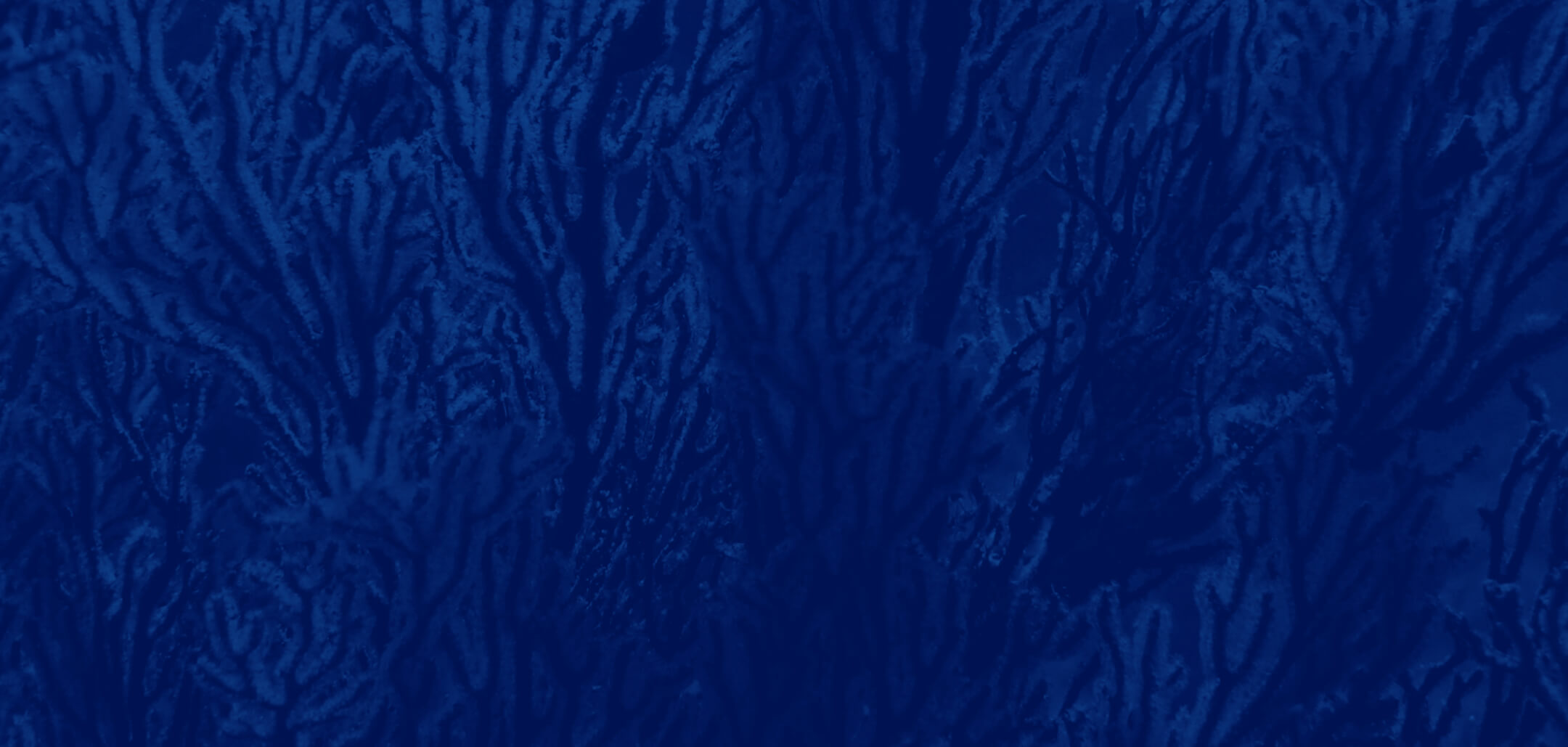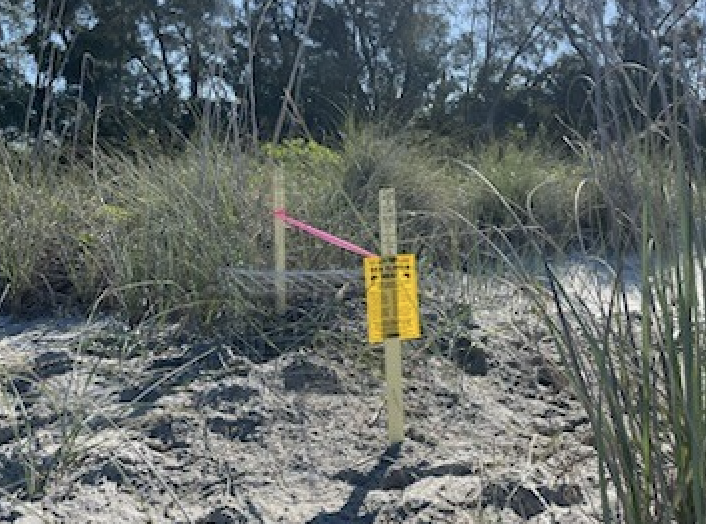Mote Marine Laboratory documented the first local sea turtle nest of 2023 on Tuesday, April 18 in Casey Key.
Mote’s Sea Turtle Conservation & Research Program (STCRP), interns and approximately 300 volunteers began monitoring Sarasota area beaches on April 15, finding the first nest early – just 3 days after patrolling began.
Mote’s Sea Turtle Patrol monitors nesting activity on Longboat Key through Venice every day of sea turtle nesting season, which officially runs from May 1-Oct. 31 in southwest Florida.
“Sea turtles don’t necessary stick to the calendar, so we typically start patrolling a few weeks before the official season, and we’re glad we do, otherwise, we might not have found this nest today,” said Melissa Macksey, Senior Biologist with Mote’s Sea Turtle Conservation and Research Program. “Today marks the earliest documented nest in our program’s history, which might mean, we’re in for a busy season, and it is more important than ever before that we do as much as we can to keep our beaches turtle-friendly.”
The first nest was laid by a loggerhead sea turtle, a threatened species protected under federal law. Loggerheads are the most common species on southwest Florida nesting beaches, followed by endangered green sea turtles. In recent years, Sarasota County has also hosted a handful of endangered Kemp’s ridleys, among the smallest and rarest sea turtles.
This year, Mote’s Sea Turtle Conservation and Research Program will continue its long-term studies of local sea turtles by documenting every sea turtle nest and false crawl (when a turtle emerges but does not leave a nest) in Mote’s patrol area, marking each nest with yellow stakes and flagging tape and collecting a suite of data.
Mote research has shown that nest numbers have increased recently on local beaches, with several record-breaking years in the past decade. In 2022, Mote reported 4,483 nests on Longboat Key through Venice.
The public will be able to view Mote’s weekly counts of sea turtle nests on Longboat Key through Venice at: www.mote.org/2023nesting.
“Now that we know sea turtle nesting season is underway, we strongly urge beachgoers to enjoy our beautiful beaches while making sure we do our part for these sea turtles that are endangered and threatened species that have been nesting here for millions of years,” said Macksey.
How to protect sea turtles
During nesting season, it is important to keep local waters and beaches sea turtle friendly.
Sea turtles are swimming just offshore to mate before the females come ashore to nest, juvenile turtles are feeding along the Gulf Coast, and by early summer the first hatchlings will venture into Gulf waters.
On the nesting beaches, light from waterfront properties can disorient nesting female turtles and their young, which emerge at night and use dim natural light to find the sea. Also, beach furniture, trash and other obstacles can impede sea turtles and their young.
On shore
Do:
- If you encounter a nesting turtle or hatchlings, remain quiet and observe from a distance.
- Shield or turn off outdoor lights that are visible on the beach from May through October.
- Close drapes after dark and stack beach furniture at the dune line or, ideally, remove it from the beach.
- Fill in holes that may entrap hatchlings on their way to the water.
Do Not:
- Approach nesting turtles or hatchlings, make noise, or shine lights at turtles.
- Use flashlights or fishing lamps on the beach.
- Encourage a turtle to move while nesting or pick up hatchlings that have emerged and are heading for the water.
- Use fireworks on the beach.
- For more details, please refer to local sea turtle ordinances, including Sarasota County’s marine turtle protection code (which includes Lido, Siesta, Casey and Manasota Keys), the City of Venice marine turtle protection ordinance and the Town of Longboat Key marine turtle protection ordinance. An updated Longboat Key ordinance took effect in 2022. For questions about any sea turtle code or ordinance, contact code enforcement staff from each municipality.
On the water
- Follow Coast Guard-approved safe boating guidelines and use vigilance to avoid striking sea turtles and other large marine life.
- Be sure to stow trash and line when under way. Marine debris that accidentally blows overboard or out of a truck can become ingested by or entangled around marine life.
- Wear polarized sunglasses to better see marine life in your path.
- While viewing any large marine animals, follow 10 viewing tips (designed for dolphins, but suitable for other large marine species too). Click here for a PDF.
Emergency contacts
If you see a sick, injured or stranded sea turtle, dolphin or whale in Sarasota or Manatee county waters, contact Mote Marine Laboratory’s Stranding Investigations Program at 888-345-2335. Outside of Sarasota or Manatee counties, please call the Florida Fish and Wildlife Conservation Commission (FWC) at 888-404-FWCC (3922).
If you suspect that someone is tampering with a sea turtle nest, harassing a sea turtle or has possession of a sea turtle or any of its parts, please call FWC, call your local sheriff’s department.
Sea turtles are protected under federal law and any harassment or interference with a sea turtle, living or dead, their eggs and/or nest marking materials is subject to penalty.
Fast facts about Mote’s sea turtle monitoring:
- Approximately 300 volunteers assist Mote’s team of biologists and interns with daily monitoring of beaches.
- 35 miles of beaches monitored, from Longboat Key through Venice.
- 2023 is the 42nd year of monitoring by Mote.
- In 2022, Mote documented 4,483 nests
- The top-three years for number of sea turtle nests in the Sarasota region have occurred in the last 8 years.
- Follow weekly nesting numbers at mote.org/2023nesting
- Nesting season in this region is officially May 1 – Oct. 31. Please consult all applicable laws and ordinances that may be in your area. Consult FWC’s website for information about ordinances that may apply to you.
- Sea turtles, sea turtle eggs and nesting marking materials are protected under state and federal law and any harassment or interference with a sea turtle, living or dead, is subject to penalty.


